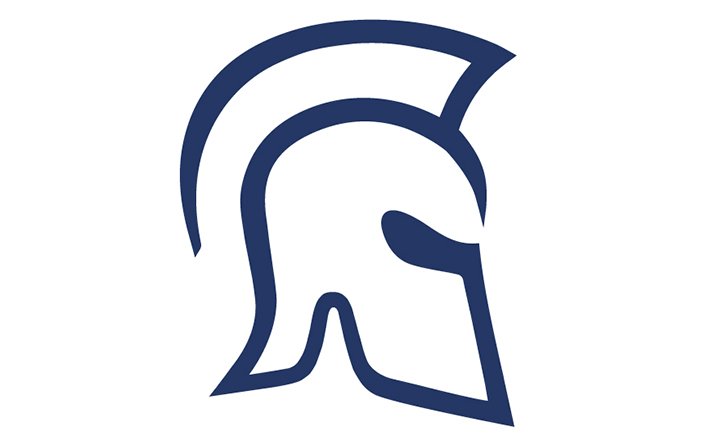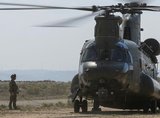Insight: What does the future hold for the Eurofighter Typhoon combat aircraft?
The UK procured 40 Typhoon Tranche 3A aircraft, the last of which was delivered in September 2019. (Photo: BAE Systems)
The Eurofighter Typhoon Tranche 3A is the latest variant of the Typhoon multirole fighter aircraft family. Under the Tranche 3A contract signed in 2009, a total of 112 aircraft have been planned for the four European partner nations of Germany, Italy, Spain and the UK.
The first Tranche 3 was produced for the RAF by the Eurofighter consortium and assembled by BAE. Other Typhoon 3A customers include Kuwait, Oman, Qatar and Saudi Arabia.

Additional information
How is the Eurofighter programme structured?
The Eurofighter consortium is based and registered in Munich. Eurofighter Jagdflugzeug GmbH coordinates the design, production and upgrade of the Eurofighter Typhoon aircraft.
The four partner nations of Germany, Italy, Spain and the UK established the NATO Eurofighter and Tornado Management Agency (NETMA) to manage their requirements and act as the primary customer interface with the industry.
Similarly, the national aerospace companies – Airbus, BAE Systems and Leonardo established Eurofighter Jagdflugzeug GmbH to act as the primary interface with the customer (NETMA) and coordinate the programme across the industry.
Production workshare includes Airbus Defence & Space, Germany 30,0%; Airbus Defence & Space, Spain 13,0%; BAE Systems 37.5% and Leonardo 19.5%.
EUROJET, comprising Rolls-Royce (RR), MTU Aero Engines, Avio and Industria de Turbo Propulsores (ITP), is the industrial consortium responsible for the management of the development, production, maintenance and sales of the EJ200 engine.
Technical description
Typhoon Tranche 3A is equipped with fittings for conformal fuel tanks to free up space for additional weapons where the underwing tanks would previously have been carried. Its AESA radar offers better capabilities compared to mechanically scanned radars, including higher levels of multi-target tracking and enhanced weapon integration. There is also a provision for fibre-optic cabling, which may be needed for future generations of weapons.
What sensors are fitted to the Typhoon?
The Captor-E electronically scanned radar is the future primary sensor on the Typhoon and has a full suite of air-to-air and air-to-surface modes. The aperture of the aircraft allows installation of Captor-E’s optimised and repositionable array, the field of regard of which is 50% wider than that of traditional fixed-plate systems.
This field of regard offers significant benefits in both air-to-air and air-to-surface engagements. The large power and aperture available provide the pilot with enhanced angular coverage compared with fixed-plate systems.
On 4 July 2023, the UK MoD announced it had awarded Euroradar an £870 million ($1.1 billion) contract to deliver the new radar capability that will also provide advanced EW, electronic attack and electronic surveillance capabilities.
The Mk 2 radar will equip the RAF jets with enhanced air-to-surface and air-to-air capabilities and allow the integration of new weapon systems.
The contract is part of the £2.35 billion ($2.98 billion) investment package announced last July at the Royal International Air Tattoo (RIAT) by then Minister for Defence Procurement Jeremy Quin.
The following contract under the investment package will be awarded for the series production of the radar, which will result in 40 systems. Some of the 12 test radars developed will be converted into production products. The third contract will cover Phase 4 Enhancement (P4E) and will see BAE Systems, Leonardo, and the RAF test the radar together with other capabilities and implement it on the Typhoon.
P4E is a wider-four-nation Eurofighter programme (Italy, Germany, Spain and the UK) that, alongside the ECRS Mk2, will integrate the AESA onto frontline RAF Typhoons by 2030.
BAE Systems and Leonardo UK will carry out the development of the Mk2.
What technologies are installed in the aircraft's cockpit?
The cockpit features a head-up display, direct voice input, hands-on throttle-and-stick and three full-colour multifunction head-down displays. It also features a Helmet-Mounted Symbology System (HMSS) alongside six other pilot display surfaces. The HMSS provides flight reference and weapon data aimed through the visor. It is fully compatible with night vision aids using light intensification and FLIR imagery.
The aircraft is fitted with Multifunctional Information Distribution Systems, which allow the platform to securely exchange real-time data between a wide variety of users, including the air force and, where appropriate, land and naval forces.
What are the upgrade plans for the aircraft?
Speaking at a press briefing in June 2023, the freshly appointed CEO of Eurofighter, Giancarlo Mezzanatto, said that the Typhoon needs a mid-life update. He said this will not be a simple technological refresh but will define the path towards a Long Term Evolution (LTE).
The LTE will focus on how to enable the fighter to manage and exploit more data, more quickly. The programme will define the path for, and will bridge the gap to, sixth-generation fighters.
BAE Systems is working to future-proof the Typhoon by reengineering certain aspects of the jet under the LTE. These enhancements will include substantially increased computational power, upgrading the core of the weapon systems, and giving the aircraft new mission computing and software.
These all fall under the Medulla project, which aims to assess the future operational space and threat environment and create solutions for the 2030s' data- and software-intensive battlespace.
Anthony Gregory, BAE Systems Europe BD director, told Shephard at the company’s Warton facility that there are clear parallels between Typhoon modernisation and the Global Combat Air Programme (GCAP).
The fighter incorporating all the new upgrades developed through the Medulla Project is labelled Eurofighter Tranche 5.
Although Medulla is currently a BAE Systems-only effort, Gregory said, all the modernisation works are a subset of what it has been discussed with the Eurofighter partner nations under the LTE effort.
What is the unit cost of a Eurofighter Typhoon?
According to a UK National Audit Office report, Typhoon's unit cost is £73 million ($117 million), based on production cost alone. The same report calculates the total unit cost to £126 million ($201 million), including the development costs and cost of capital.
Which countries operate the Tranche 3A Typhoon?
Germany
Germany acquired 31 Typhoon Tranche 3A multirole jets, the last of which was delivered in December 2019.
In August 2021, the German procurement authority BAAINBw commissioned Hensoldt to investigate the modernisation and performance enhancement of the Eurofighter's self-protection system in a multi-year study. The project will look at assertiveness and survivability against modern threats, including long-range integrated air defence systems.
Italy
The Italian Air Force ordered 21 Tranche 3A aircraft, and deliveries began in March 2014. Italy took delivery of its last aircraft on 23 October 2020.
One aircraft crashed on 13 December 2022.
Kuwait
On 5 April 2016, Kuwait signed a contract with Leonardo valued at €7.957 billion ($8.8 billion) for the supply of 28 Typhoon aircraft, all to Tranche 3A standard. The contract involves the production of aircraft in Italy. It covers logistics, initial operational support services for three years (with an option for a further five) and the training of flight crews and ground personnel.
It also encompasses infrastructure work at the Ali Al Salem Air Base, where the Typhoons will be based. The delivery of the aircraft started in 2021 and will be completed in 2023, making Kuwait the aircraft’s eighth customer.
The fifth and sixth aircraft were delivered to Kuwait on 28 September 2022.
Oman
BAE Systems announced on 21 December 2012 that it had signed a £2.5 billion ($3.95 billion) contract with the Sultanate of Oman for the purchase of 12 Typhoon Tranche 3A aircraft and eight Hawk Advanced Jet Trainers. Deliveries were completed between 2017-18.
Qatar
In 2019, Qatar signed a £5 billion ($6.28 billion) contract with BAE for the procurement of 24 Typhoon Tranche 3A aircraft to replace part of the Qatari Air Force's Mirage 2000 fleet. The deal also includes the supply of nine Hawk trainer aircraft and provision of in-service support and initial training, with the first jets due to be delivered in 2022.
The first aircraft was delivered in August 2022.
Saudi Arabia
Saudi Arabia took delivery of 24 Typhoon 3A aircraft between 2015-17. In June 2018, Saudi Arabia agreed to procure 48 Eurofighter Typhoon Tranche 3A multirole fighter aircraft from BAE. However, Germany's defence export ban to Saudi Arabia, imposed in October 2018 following the killing of Saudi journalist Jamal Khashoggi, suspended the progress of the project.
In September 2019, Germany extended the arms sales export ban until 31 March 2020. The deliveries of Tranche 3A aircraft will start in 2024 if Germany does not issue another defence export ban to Riyadh.
However, in July 2023, in the wake of the Vilnius NATO summit, German Chancellor Olaf Scholz stated that Germany will not deliver Eurofighter multirole fighter jets to the Kingdom of Saudi Arabia in the near future.
Spain
Spain purchased 20 Typhoon Tranche 3A aircraft, and deliveries to the Spanish Air Force were completed between 2018-20.
UK
As one of the partner nations, the UK procured 40 Typhoon Tranche 3A aircraft, the last of which was delivered in September 2019. Originally the UK intended to purchase 91 Tranche 2 aircraft; however, after finalising the 72-aircraft deal with Saudi Arabia in 2007, London diverted 24 of its Tranche 2 jets to Riyadh and added this 24 aircraft order to the Tranche 3A to be counted as a part of its overall commitment.
Egypt
According to media reports in June 2020, Egypt is in discussion with Italy to sign an arms sales deal. The proposed €9-10 billion ($10-11.2 billion) sale is reported to include 24 Typhoon combat aircraft.
This article was created using data and analysis from Shephard's Defence Insight market intelligence tool. For more information or to request a demo, visit our information page here.
Shephard's DSEI 2023 coverage is sponsored by:

More from DSEI 2023 | View all news
-
![The Joint Light Tactical Vehicle continues its success as the new variant rolls out]()
The Joint Light Tactical Vehicle continues its success as the new variant rolls out
The Joint Light Tactical Vehicle (JLTV) is becoming the dominant platform in its class as it replaces most of the massive US Army and US Marine Corps (USMC) fleets of HMMWV 4x4s, colloquially known as the Humvee. Shephard dives deep into the JLTV programme background and analyses the latest variants and contracts, including the controversial production switch to AM General and the continued contracts continuing to head Oshkosh's way.
-
![Dubai Airshow 2023: How the MQ-9 Reaper UAS came to rule the skies]()
Dubai Airshow 2023: How the MQ-9 Reaper UAS came to rule the skies
Ahead of the 2023 edition of the Dubai Airshow, Shephard looks at the GA-ASI MQ-9A Reaper UAS, its role in shaping modern conflict dynamics, and its deployment for surveillance and precision strike throughout the Middle East.
-
![Orbiting the Future: How New Satellite Technologies are Revolutionising Global Communications]()
Orbiting the Future: How New Satellite Technologies are Revolutionising Global Communications
With the satellite industry at a pivotal juncture, Intelsat is investing in advanced technologies like 5G and optical communications, striving to enhance worldwide connectivity and address emerging governmental needs.
-
![CH-47 Chinook: why the timeless helicopter design is still a heavy-lift contender on the modern battlefield]()
CH-47 Chinook: why the timeless helicopter design is still a heavy-lift contender on the modern battlefield
From its emergence as a ground-breaking design in the 1950s to its widespread deployment in diverse operations worldwide, the Chinook continues to leave an indelible mark on the aviation landscape. Shephard sums up the latest developments and tells you everything you need to know about the workhorse of many armies and air forces in the 2020s.
-
DSEI 2023: Controp unveils Smart Vision AI software for EO/IR payloads
Controp Precision Technologies unveiled its Smart Vision AI software for enhancing the level of autonomy and automation for a variety of surveillance and reconnaissance missions at DSEI 2023.
-
![Babcock and Cosworth to test hybrid propulsion in militarised Land Cruiser 70]()
Babcock and Cosworth to test hybrid propulsion in militarised Land Cruiser 70
Babcock has signed an MoU with propulsion experts Cosworth to investigate the use of hybrid power systems in military vehicles and will begin with integrating a Catalytic Generator (Cat Gen) into a 70 Series Toyota Land Cruiser.

























